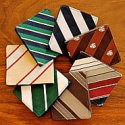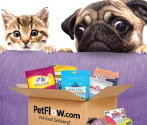-
About
- About Listly
- Community & Support
- Howto
- Chrome Extension
- Bookmarklet
- WordPress Plugin
- Listly Premium
- Privacy
- Terms
- DMCA Copyright
- © 2010-2025 Boomy Labs

 Louise Mandar
Louise Mandar
Listly by Louise Mandar
Lots of products like yours out there? Don't worry! Use one or more of these ideas to make your product unique.

Where are competitors for a similar product falling short? Do they lack customer service? Do they only service a certain geographical area? Does their product leave out a certain market? For example, if you are selling baked goods, you might notice that many competitors don't cater to the market that requires gluten-free products.

You may offer the same product as many competitors, but you could change your mission or goal. For example, Laura Skelton at Jetsam, creates trendy wallets. But, she fashions them from used vintage ties. So her goal is to create and sell fashion items by recycling products and reducing waste. This goal is unique and not only results in a cool looking wallet, but also meets the needs of an Eco-conscious market.

You'll see this often in restaurants and hotels. Think of Las Vegas and all of the hotels that differ in theme. For another less obvious example, Debbie Wells at http://vintagedancer.com sells retail clothes as an affiliate. Not uncommon, but you could say her theme is different. She only sells items that resemble vintage fashions. Go to her site and its like going back in time. Could you re-theme your product or service?

Drill down. See if you can find a niche within a niche. Maybe you can target music teachers or seniors. Your marketing and maybe even your product will differ depending on who you are selling to. Of course, you want to pick a niche that's less marketed to. For example, Abby Gnanendran at http://www.earthrated.com, instead of targeting dog owners, focused on earth-friendly dog owners with his earth rated poop bags (excuse my language).

To stand out, your product or service can be packaged with complementary ones, also making it more desirable to your audience. For example, you could sell a plain old software package or you could sell that same product with an instruction guide and a short ebook on how to use that product to maximize sales. You not only might win the sale, but you may win it at a higher price than competitors for offering more value.

Sometimes it's just a matter of taking a well-known product and doing it differently. For example, electric cars run on batteries instead of fuel, which has been the norm for a hundred years at least. Another example? opening an online gallery instead of the regular brick and mortar one.

Sometimes just changing the business model adds convenience for your customers. For example, http://www.petflow.com decided not to run a regular online store for pet products. Instead they offer a quasi-membership for scheduling regular future deliveries. Being able to schedule future deliveries, customers get the added value of less hassles related to running out of pet food and PetFlow get the convenience of recurring income.

Provide the best service. Make things easy for your customer. They'll love you for it and will keep coming. Examples of excellent customer service: quick deliveries, quick responses to inquiries, quick solutions to problems, great guarantee, and easy to contact.

If you explore your product's market, you may find some recurring problems. Can you modify your product to solve this problem? For example, imagine how confusing life would be without the invention of Sticky Notes! 3M is in the adhesive business, but it spotted an every day use for it's sticky product that would help with forgetfulness and make us all more efficient.

Instead of creating and selling another main meal, maybe you should sell accompaniments like a chardonnay or some local fresh vegetables. So as an example, instead of creating another social media platform like Facebook, focus on tools that maximize its use, like HooteSuite, for example.
